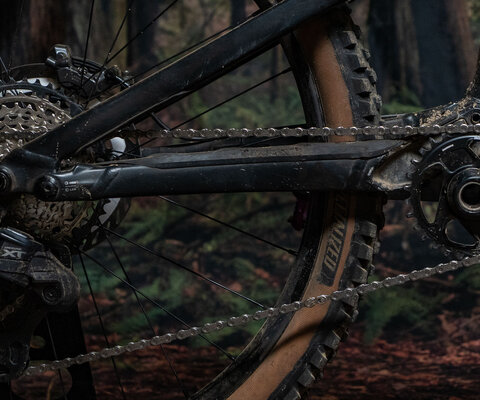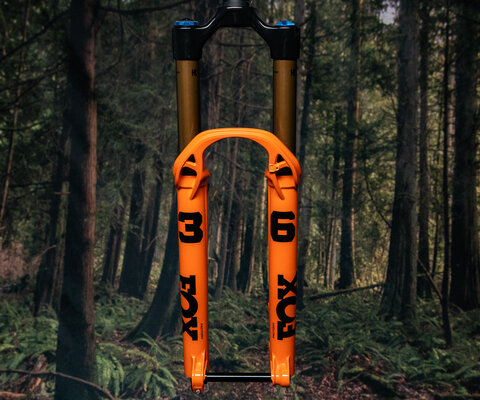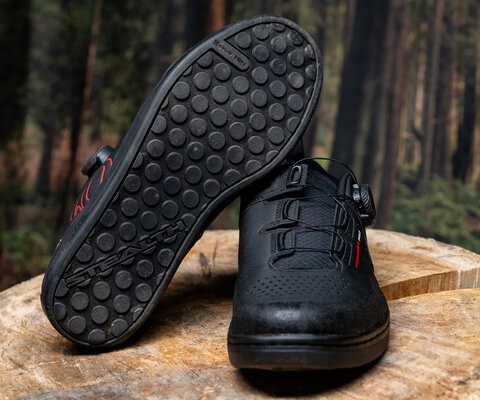
Shimano GF8 Shoe Shoe Review
Words and Photos by Cy Whitling
A step forward.
Hot on the release of three all-new wireless drivetrains, Shimano is also launching a revamped shoe line. This includes the new GE9 Hot Seat, a stiff clipless enduro race shoe, the GE9GTX, a clipless version of the GF8GTX foul weather shoe, and the new GF8 I’ve been riding in for the past few months.
Shimano calls the GF8 a “high-end gravity flat shoe.” To that end it has a reinforced shank for a stiffer feel than the GF6, a BOA closure system, and the same neoprene ankle guard as the GE9. All of those features combine to deliver a better, more refined experience than I’ve come to expect from Shimano’s flat pedal shoes, and yes, it is grippier!
Shimano GF8 Details
- Sizes available: 38-48
- Sole rubber: Ultread
- Size tested: 43
- Price: $200
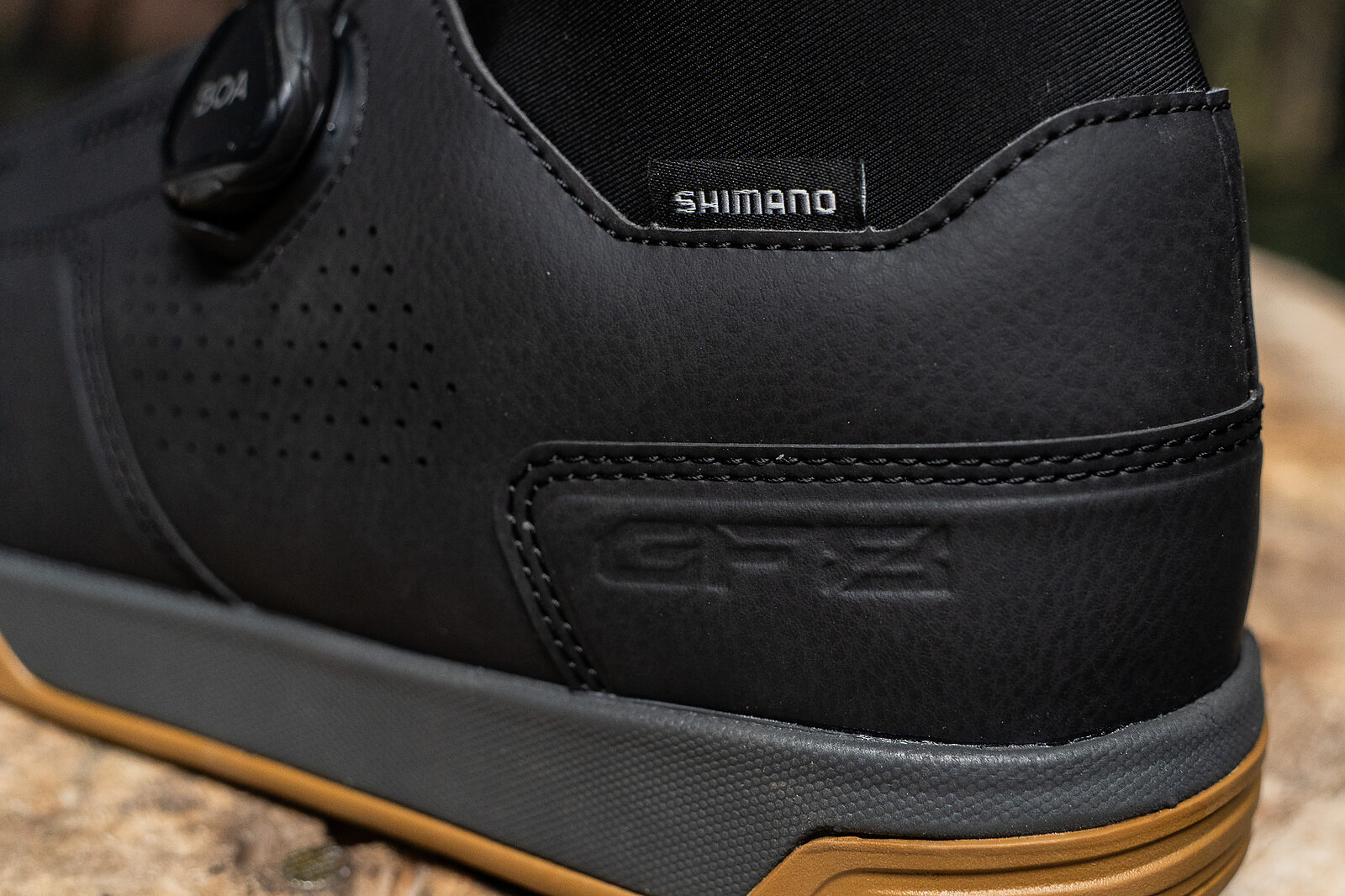
Shoe Fit
Shoe fit is a terribly personal thing. Shimano says that the fit and foot shape should be the same as that of the GF6, but the way that fit feels could be different because of the BOA dial. I wore a size 43 GF6, and now have been wearing a size 43 GF8.
I have fairly wide forefeet, which then lead to tall, sensitive insteps, and an average heel. Basically, I have a hard time finding cycling shoes that have good heel hold but don’t crunch my toes. I got along very well with the previous GF6 because it was possible to dial in the lace systems to put basically no tension on the forefoot, but lock in the heel. With the BOA fit system, that pressure is more evenly distributed. Right out the gate, I felt like the toe box was significantly tighter than on the GF6, but after a few rides, it broke in, and I haven’t had any issues since. It’s not quite as spacious as the one on Five Ten’s Freerider Pro BOA, but it hasn’t caused me any issues.
I have found that the GF8 has slightly better heel hold than the Freerider, I think some of that is due to the fact that the sole flexes a little more naturally, so instead of lifting out of the shoe, the heel moves with my foot better.
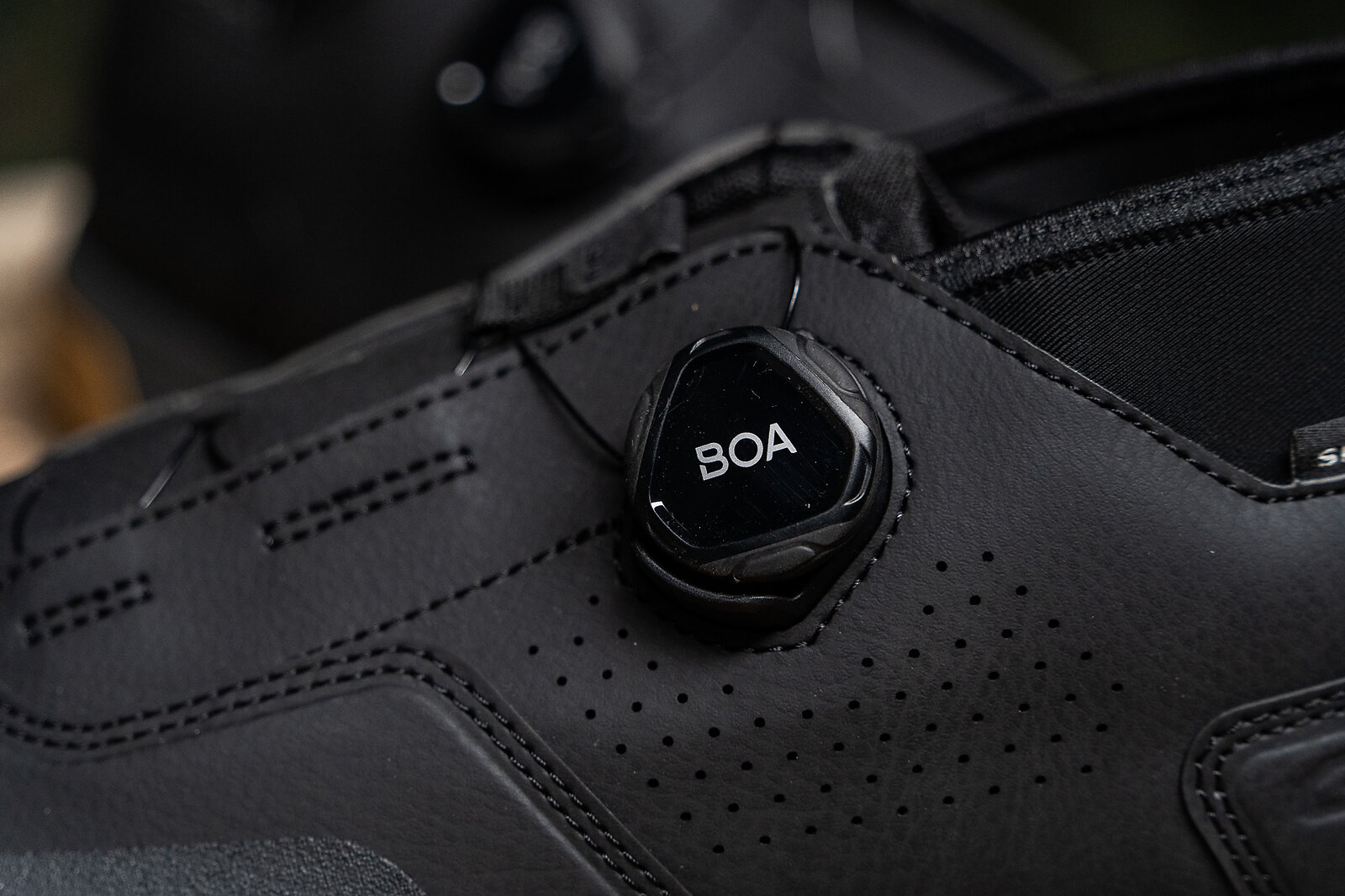
BOA Fit System
BOA is finally trickling down to flat pedal shoes and I am here for it! The big question now is how well will shoe manufacturers integrate the system? Shimano did a good job here, with a couple of standout features.
The GF8 doesn’t use the premium Li2 dials, so you can’t click them both tighter and looser. That’s not a huge deal to me, but could matter more to some folks. They included a low-profile guard for the dial, and they use cable cored laces, instead of the textile option found on some other shoes. That should bode well for durability.
The GF8 uses textile lace guides lower down on the shoe, which, in my experience, allow it to flex more comfortably with the foot, but use the plastic guides up top where they see more wear and tension.
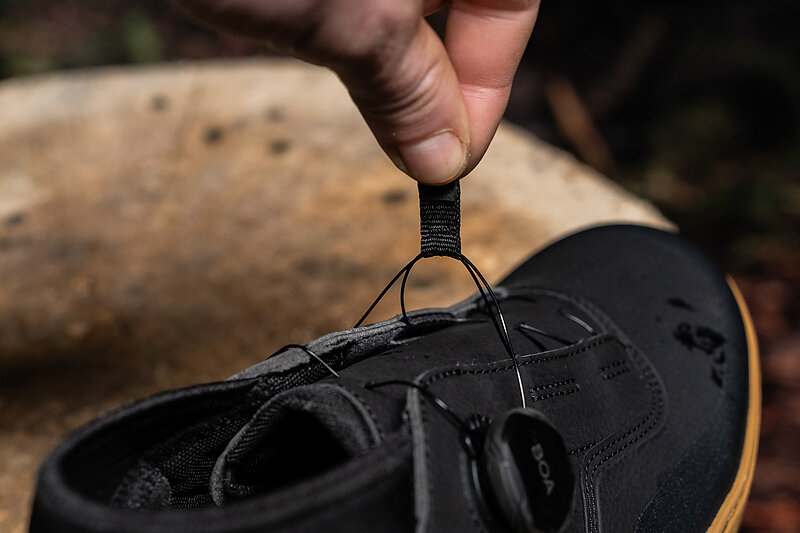
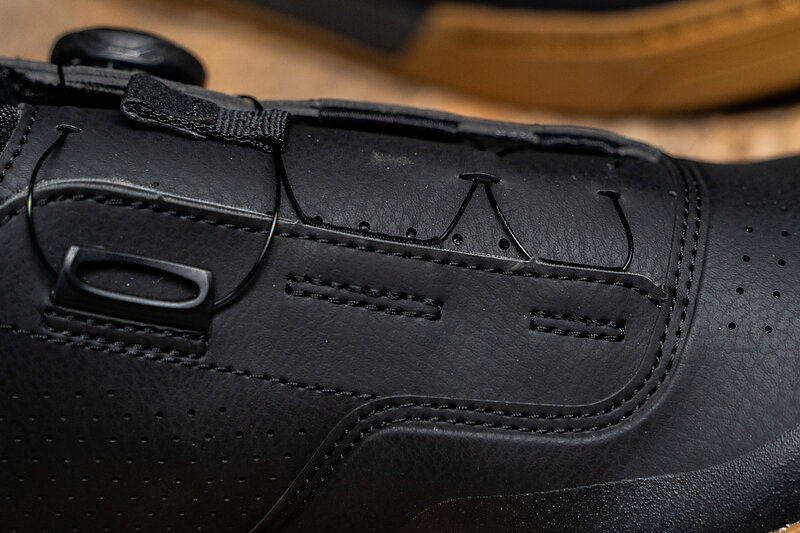
Finally, it’s a small thing, but Shimano integrated a small pull tab in the middle of the lace. This is a great feature that more BOA shoes should have. The magic of BOA is that you can totally open up the shoe with a click of the knob. But, when the laces get crusty, the shoe doesn’t always want to open all the way up. This little tab makes it easy to de-tension the entire shoe at once so that it’s easier to put on or take off.
So far I’ve been very hard on the BOA system on these shoes. I’ve been digging in them a lot, which means lots of kicking rocks, sliding down rubble fields, and getting whacked with tools.
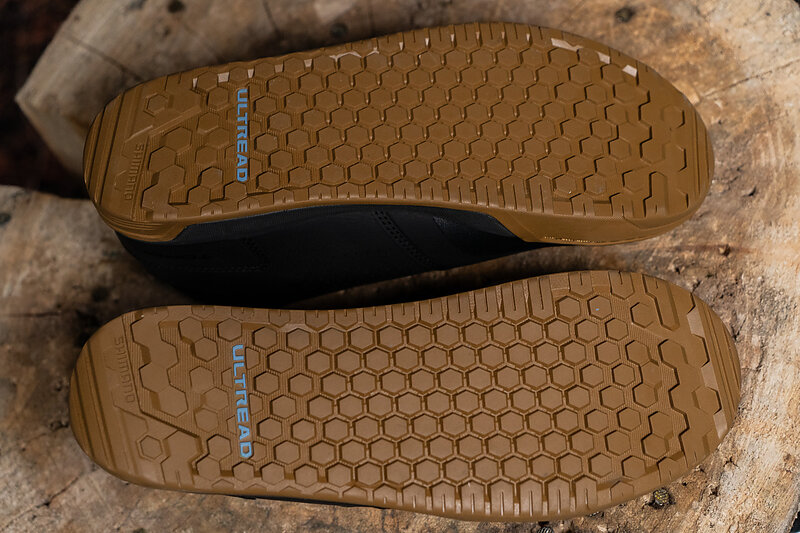
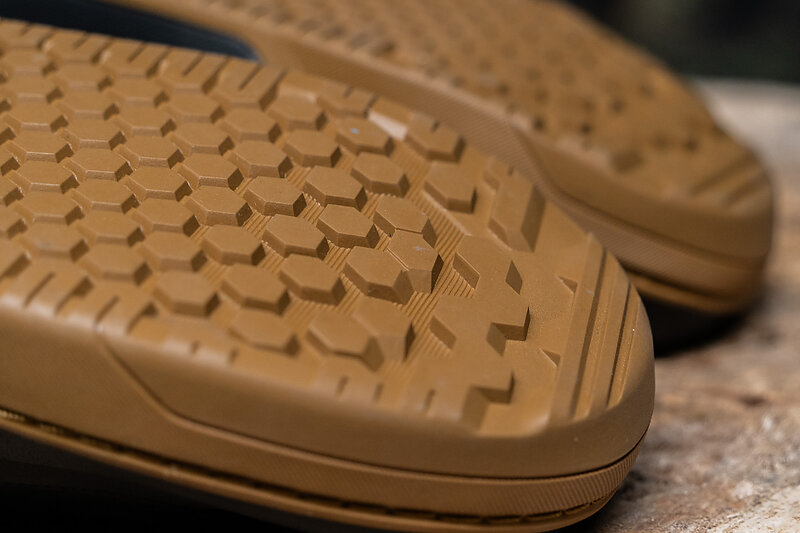
Performance
While I quite liked the Shimano GF6, I found myself relegating them to dig days, and chill rides, and opting for something with stickier rubber, and a stiffer sole for most serious rides. They had good grip out of the box, but it felt like it degraded rather quickly, and my feet became more fatigued than with stiffer shoes. The GF8 addresses both those issues head-on. It’s stiffer, and it’s stickier.
Right now I think Five Ten and Specialized are edging for dominance in terms of all-out grip, and the GF8 is just a half-step below them. It’s not quite as sticky and slow-rebounding, but it’s definitely close enough. That’s rad. And it’s notably stiffer than the GF6. It's not quite as stiff as the Five Ten Freerider Pro BOA, but I haven’t noticed it being more fatiguing.
In fact, for my riding style at least, the Freerider feels a little too stiff, almost wooden, especially on pedals like OneUp’s new Wave. The GF8 contours to the pedal just a little bit better, and similarly hikes just a little more comfortably. It’s all relative, and these are small differences, but they add up to a very good shoe.
My one beef with the GF8 is the gaiter. It’s so close to being awesome, but it just falls short, so it feels like a bit of a tease. It’s not quite tall enough to actually do traditional gaiter things, so instead, it tends to flex open when I’m hiking, creating an inviting funnel for trail debris to fall into. I’d love to see a taller, better-coverage gaiter on this shoe that actually locks in around the ankle to keep rocks and bark out. The current gaiter is a fine touch, but it feels like a bit of a promise made that it can’t quite deliver on.

For Now
It feels like flat pedal shoes are finally getting the attention and energy they deserve. Shimano’s new GF8 is a great example of this. Dialed details and small performance features that make for a better riding experience.
Learn more: Shimano
